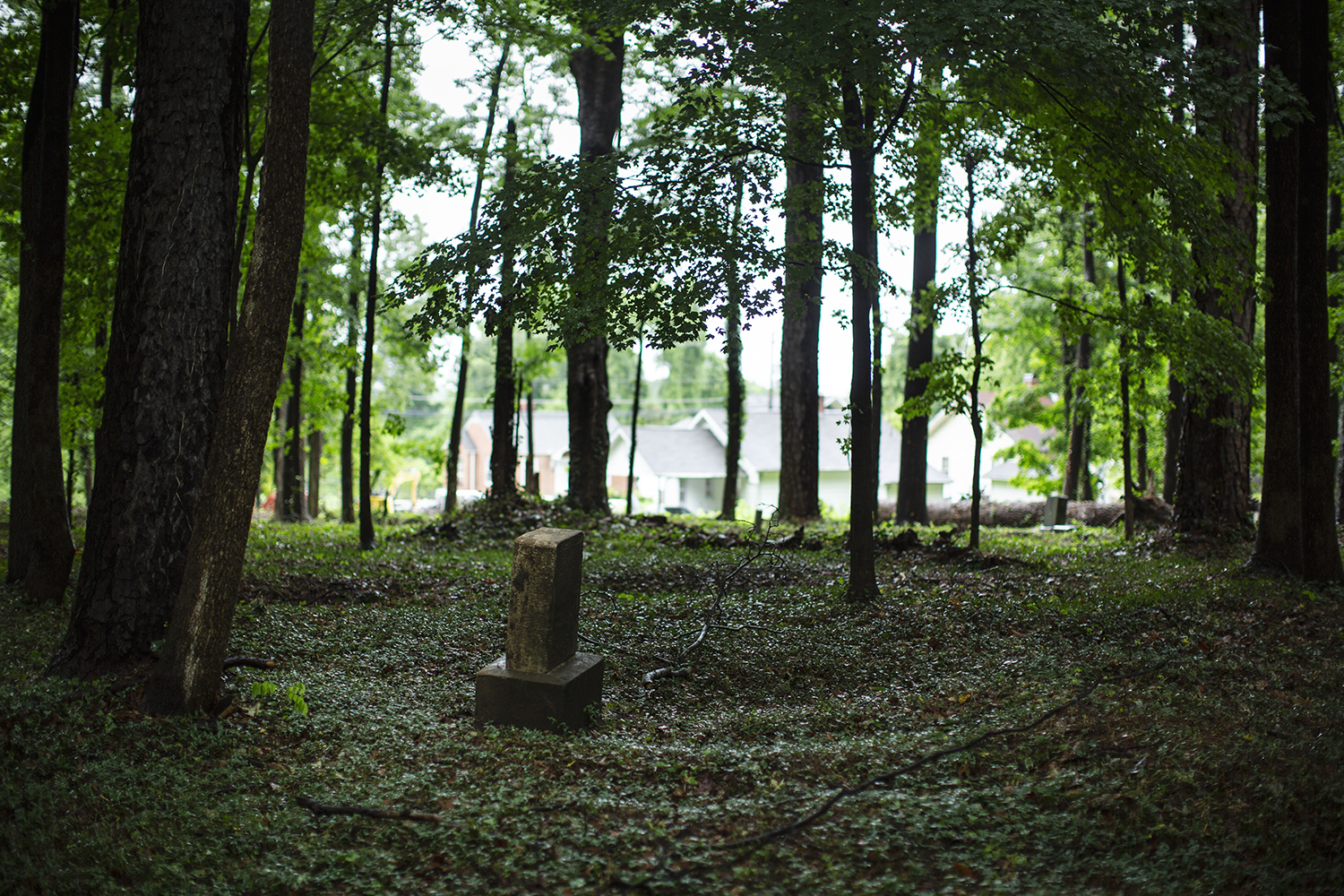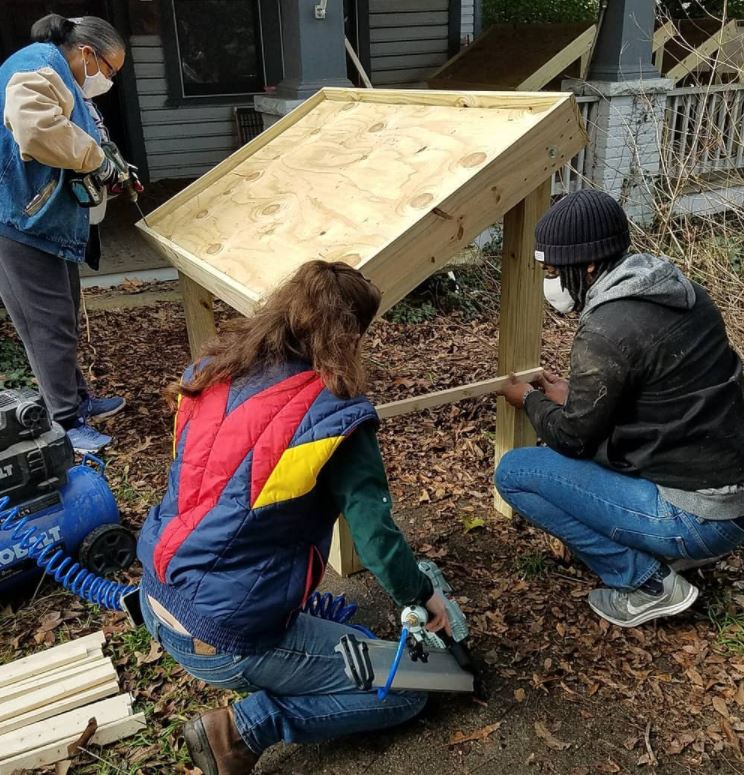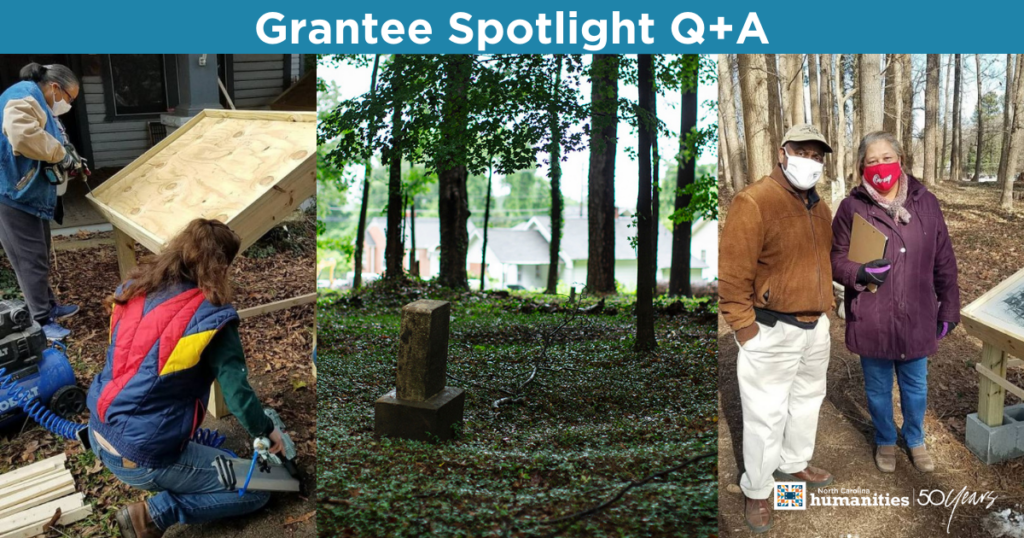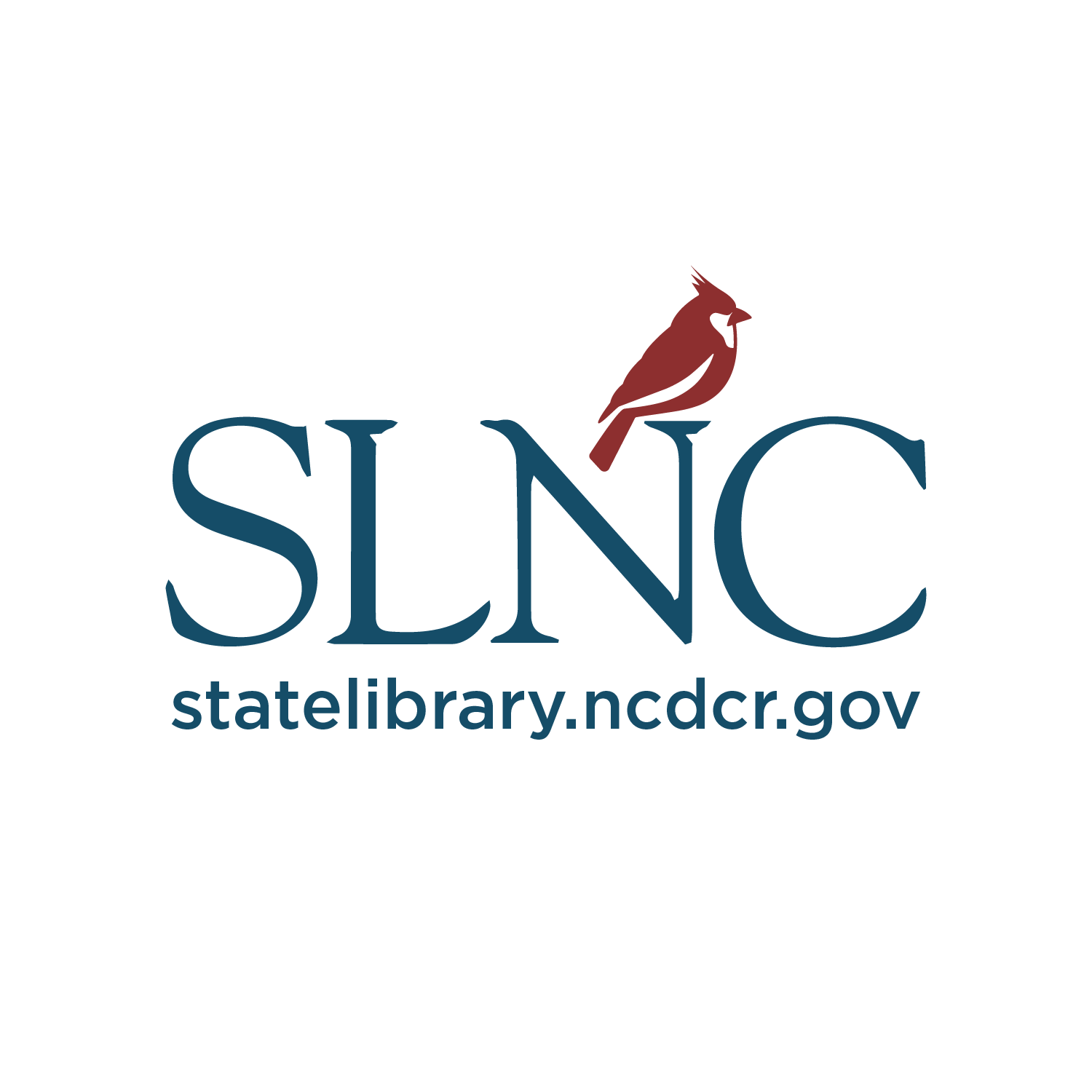Grantee Spotlight: A Q+A with North Carolina Humanities Grantee Friends of Geer Cemetery
Geer Cemetery, located in Durham, North Carolina, began in 1877 when three African American men bought two acres of land to be used as a burial ground for the surrounding African American community. Today, it is estimated that over 2,000 people are buried in Geer Cemetery, many of whom experienced slavery and rural-to-urban migration. The last known burial occurred in 1945, and Geer Cemetery became overgrown over time. Friends of Geer Cemetery was formed in 2003 to help clean up the site and works to reclaim, restore, and respect one of Durham’s first burial grounds for the African American public.
 In 2020, North Carolina Humanities awarded a Community Engagement Grant to Friends of Geer Cemetery to build and research a public exhibit, “In Plain Sight”, which opened to the public in early 2021. Set along the historic carriage track through the graveyard, a series of panels showcased the personal stories of those buried there and their descendants. Other panels explained how the graveyard itself, and the African Americans laid to rest there, played a role in developing Durham.
In 2020, North Carolina Humanities awarded a Community Engagement Grant to Friends of Geer Cemetery to build and research a public exhibit, “In Plain Sight”, which opened to the public in early 2021. Set along the historic carriage track through the graveyard, a series of panels showcased the personal stories of those buried there and their descendants. Other panels explained how the graveyard itself, and the African Americans laid to rest there, played a role in developing Durham.
We connected with Nick Levy, historian and project director, to talk about the importance of Geer Cemetery and how NC Humanities helped invigorate a long-standing community restoration and education initiative.
Q: How did “In Plain Sight” come about, and how did you get involved?
Nick: The Friends of Geer had long been a hard-working but informal group of descendants of people buried in the cemetery and their allies. We had finally been able, just as the pandemic hit in early 2020, to gain formal 501(c)(3) nonprofit status, and this support from NC Humanities for the “In Plain Sight” exhibit was our first successful grant application! For my part, I became active with local history and volunteer work when I moved to Durham about six years ago. History is my field of academic work, but it is also how I get to know spaces, how I begin to understand urban development and land use. I heard someone mention that there was a group interested in this local graveyard, and that research on both the space and the folks who were laid to rest there might be helpful. I thought, “Here’s an interesting hands-on project,” so I started going to meetings. There were just some great people and certainly some great stories.
 Q: How have you seen the work of Friends of Geer Cemetery and the exhibit “In Plain Sight” impact community members?
Q: How have you seen the work of Friends of Geer Cemetery and the exhibit “In Plain Sight” impact community members?
Nick: One of our longtime, most active descendants shared with us her first recollection of the cemetery and learning she had a personal link to it. She was driving by with her grandfather and remembers her grandfather saying, “You know you’ve got cousins in there. Your people are in there.” At that time, it was just kudzu vine-covered woods with trash dumped around it, making it unclear that it was a cemetery at all. Looking at the land, she just assumed that what her grandfather meant was that her cousins were literally living in the woods! Although it’s a funny story, it’s an example that even though it was no longer a space that was particularly possible to visit, it was passed on. It was something that was important for grandfather to say to granddaughter in the backseat of a car driving by, even if that’s all it could be. I think the exhibit and the work of Friends of Geer Cemetery has helped the community reclaim a place that is about honoring the people there.
Q: What can we learn from the history of Geer Cemetery?
Nick: By preserving these spaces within African American communities, particularly in the south where Jim Crow insisted on the segregation of spaces even in life and in death, we can understand individual and family stories and a broader community story of resilience in the face of injustice. How we honor people at the end of their lives; the ways in which we use land to memorialize, almost as a site of pilgrimage; how we respect our ancestors; and how we reflect on the meaning of life, family, and community. These are the questions that I think cemeteries are designed to evoke. Geer Cemetery gives us an opportunity to engage with complex history. We can think about what it means in the present, learn about it historically, and then do something about it, whether that’s participating in a cleanup or research volunteer group.
 Q: What did this exhibit and funding from NC Humanities help Friends of Geer Cemetery accomplish?
Q: What did this exhibit and funding from NC Humanities help Friends of Geer Cemetery accomplish?
Nick: This support from North Carolina Humanities was the first grant that Friends of Geer Cemetery received as a nonprofit. From there, it allowed us to continue to gather people around the cause and led to us gaining the support of more than 100 donors and volunteers. We expanded our capacity as a growing group and were able to provide a safe, public educational opportunity during the COVID-19 pandemic. We were also able to focus what we’ve learned from descendants and do more formal research in public records and institutional collections. The exhibit was another huge step in making Geer Cemetery what it deserves to be: a space to honor those buried there, their families, and descendants. Overall, this ended up being a great experience.
Q: What makes Geer Cemetery unique, and why is it important to preserve?
Nick: There are only so many spaces where the connection to the past feels unmediated. There are only so many landscapes that speak powerfully of history. This is absolutely one of those landscapes. I think it speaks powerfully not just of history in general, but of a particular history that we don’t have a lot of resources about, be they landscapes, buildings, or books. This is a resting place of people who may not have left a stack of papers or a legacy in the way that our history – and I say this as a historian – is structured to recognize legacy. But here are nearly four acres in rapidly developing Durham where people decided a long time ago to use the land to remember and honor members of their community. Geer Cemetery requires recommitment. Each year, we go out and do our best to make sure that the invasive ivy doesn’t win. But that recommitment by so many is an opportunity to learn and effect change again and again.
Q: How can people support Friends of Geer Cemetery?
Nick: Donate, volunteer, or visit! To learn more about Friends of Geer Cemetery visit http://friendsofgeercemetery.org/ and to learn more about the exhibit “In Plain Sight” visit https://durhaminplainsight.com/.
About North Carolina Humanities’ Grantee Spotlights: In celebration of our 50th anniversary, NC Humanities Grantee Spotlights shine a light on the incredible work of our grantee partners, offering details about their funded project, and feature a Q&A with a team member associated with the organization.
Photo Captions:
(1) Grave marker. Photo Credit: Brian Palmer, https://www.brianpalmer.photos/
(2) Friends of Geer Cemetery President Debra Taylor Gonzalez-Garcia meets Elliott Gilmer, descendant of Riley M. Gilmer and others buried at Geer Cemetery during a weekend tour day. Photo Credit: Friends of Geer Cemetery
(3) Friends of Geer Cemetery volunteers building supports for “In Plain Sight” exhibit panels. Photo Credit: Friends of Geer Cemetery









